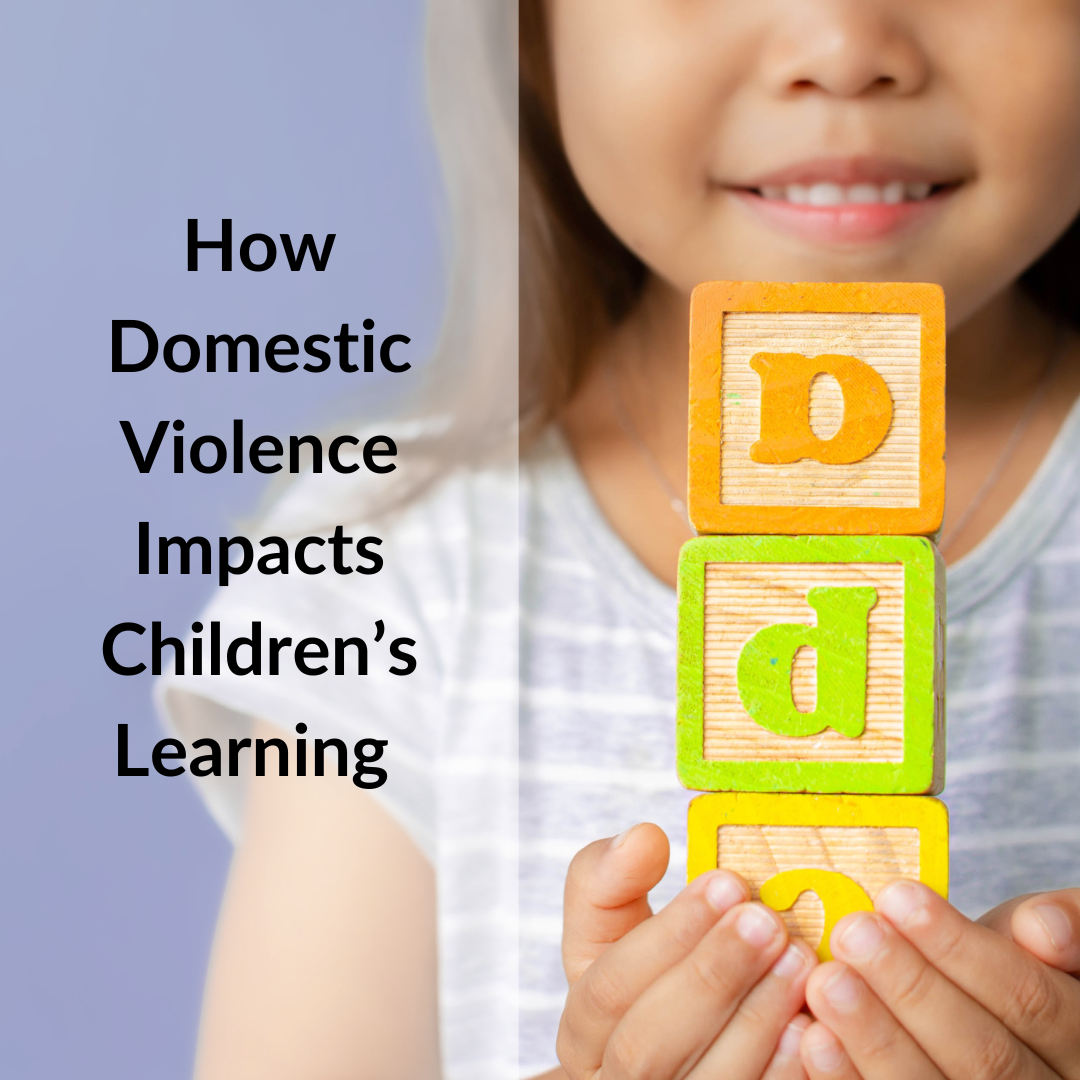By Shirley Sanguino
In the United States, 1 in 15 children are exposed to domestic violence (DV) each year, and 90% of these children witness the violence that occurs in their homes.
In homes with domestic violence, children are negatively impacted at all stages of their development in the key areas of life: physical, mental, behavioral, and relational. Trauma from DV can impact children’s bodies as well as their minds. This in return, can affect their ability to transfer information across in different settings such as school.
Not only can physical impacts range from gastrointestinal, cardiovascular, musculoskeletal, respiratory, and dermatological symptoms, but DV can even damage children’s DNA and shorten their lifespans.
This introduction to DV is very daunting! Many of these kids need help and home is where they may not get it. Teachers, school counselors, and any professional that works with these kids can have a positive impact on these children’s lives in the school and academic world’s they enter into.
Let’s look at how learning overall is affected by domestic violence.
Children who live with domestic violence can have a hard time with school life and academics
The list of symptoms that effect the development of all aspects of the growth cycle for these children also impairs learning abilities. It also has an impact on how children behave within a school environment. Take a look at this infographic below broken down by general age groups. NIH approximates that 45 million children will be exposed to violence in childhood. This is 10% of children annually.
The effects of DV in the home spills over into a child’s school life, impairing the ability to function and thrive in school:
Effect on Preschool Children
|
Effect on Young Children
|
Effects on Adolescents
In adolescents, witnessing domestic violence can affect
|
|
 |
Children who witness domestic violence in the home experience several effects that can interfere with school, such as:
|
||
One of the most overlooked aspects of domestic violence is its profound impact on children, particularly their ability to learn and thrive academically.
As someone who has contact with children growing up with DV, there are some key points to consider in these children’s academic life:
- Emotional Stress and Trauma: Children exposed to domestic violence often experience intense emotional stress and trauma. Witnessing conflict and violence at home can lead to feelings of fear, anxiety, and insecurity, making it challenging for them to focus on their studies.
- Cognitive Impairment: The chronic stress caused by living in an environment of domestic violence can affect children’s cognitive development. It may lead to difficulties in memory retention, problem-solving, and critical thinking, all of which are essential for successful learning.
- Concentration and Attention Issues: Children exposed to domestic violence may struggle with concentration and maintaining attention in the classroom. The constant worry about their home situation can lead to difficulties in engaging with academic tasks.
- Behavioral Problems: Research has shown a link between exposure to domestic violence and behavioral problems in children. These behavioral issues can disrupt the learning environment for both the child affected and their peers.
- School Absenteeism: The stress and anxiety caused by domestic violence can lead to absenteeism from school. Frequent absences can impact a child’s academic progress and social integration.
- Impact on Self-Esteem: Witnessing violence can erode a child’s self-esteem and self-worth. This can affect their confidence to participate in classroom activities and interact with peers.
- Long-Term Educational Outcomes: The negative effects of domestic violence on children’s learning can extend into their future educational achievements. Lower grades, limited educational aspirations, and decreased opportunities for higher education can result from these early challenges.
The impact doesn’t stop at childhood
Stopping domestic violence in childhood is the key to ensuring that cycles of violence for future generations don’t continue. These children who live with violence become adults. These children experience what is called Childhood Domestic Violence.
The effects of childhood can stay with you for life. It will impact physical and mental well-being, and the ability to thrive as an adult in a successful and happy life. CDV’s impact is of epidemic proportions. Globally, it impacts 1 in 7 people. It impacts 15 million children and 40 million adults in the U.S alone.
There are 275 million children globally currently growing up in homes with domestic violence. This will be the new generation of adults who struggle their whole lives with physical and mental issues impacted by CDV.
Helping children of domestic violence reach their potential in school and academics
Schools and educators play a crucial role in identifying and supporting children affected by domestic violence and there are a few ways to help mitigate the impact DV has on learning:
- Supportive Interventions: Creating a safe and nurturing environment, offering counseling services, and involving parents or guardians in the healing process.
- Collaborative Efforts: Addressing the impact of domestic violence on children’s learning requires collaboration between schools, social services, and community organizations. Holistic support systems can provide children with the resources they need to overcome challenges and succeed academically.
- Raising Awareness: Increasing awareness about the connection between domestic violence and children’s learning is vital. By shedding light on this issue, we can encourage the implementation of policies and programs that provide comprehensive support to these young learners.
Recognizing the impact it has on children’s learning and taking proactive steps to address children’s needs can make a significant difference in helping them overcome adversity and reach their full potential.
Through intervention, collaboration, and awareness, educators can have a positive influence, one that will impact not only a child but also future generations of this child’s family.

